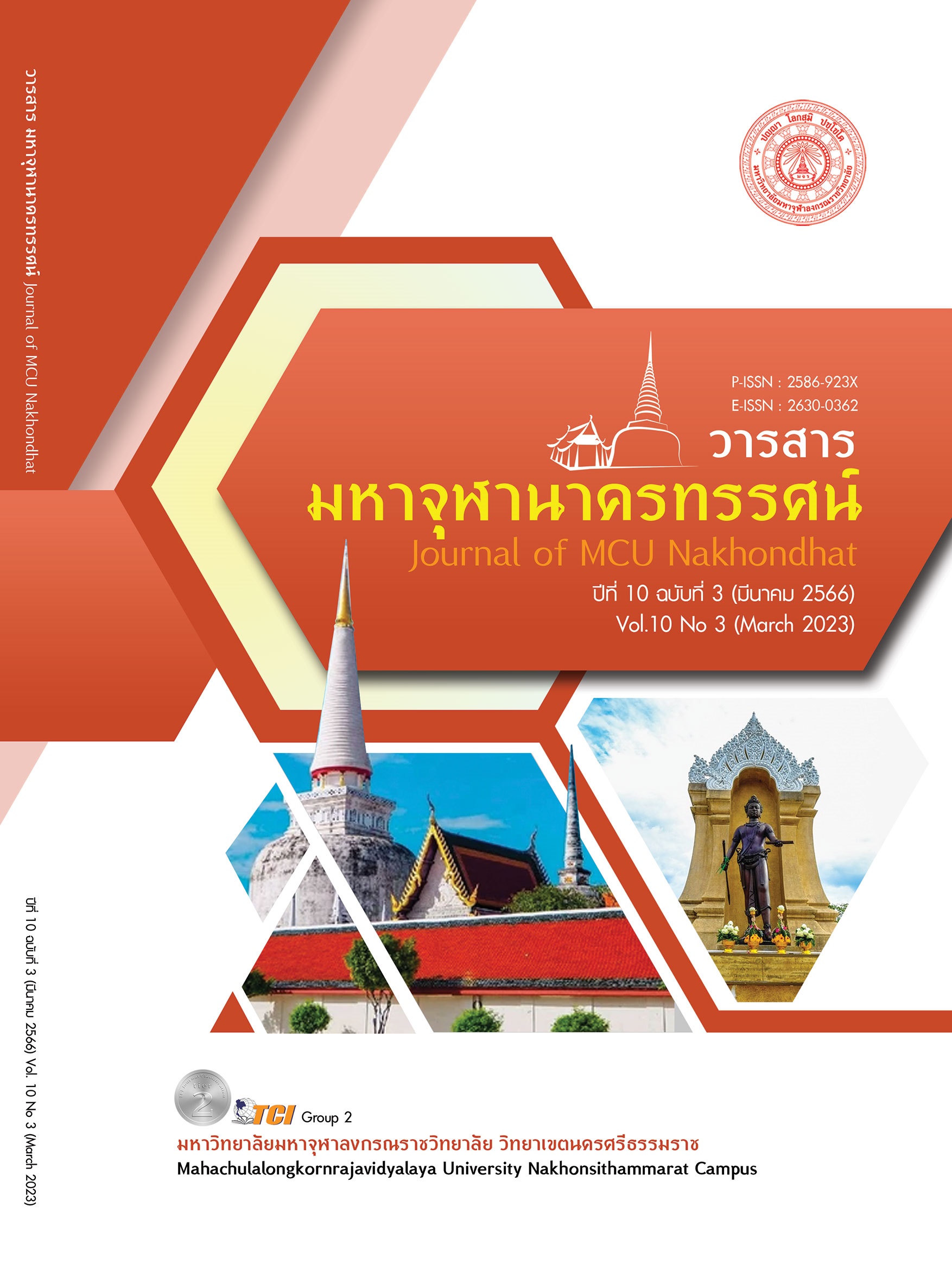IMPROVING THE QUALITY OF LIFE OF UNDERPRIVILEGED CHILDREN THROUGH CREATIVE VISUAL ARTS ACTIVITIES OF THE SCHOOLS UNDER THE SPECIAL EDUCATION BUREAU, CHIANG MAI
Main Article Content
Abstract
This research aimed 1) to study context and background information of life of underprivileged children 2) to compare the behaviors of underprivileged children before and after attending creative visual arts activities 3) to examine the satisfaction of underprivileged children, using mixed research model. The sample in this research consisted of 20 students studying in Prathomsuksa 4-6 (Grade 4-6). They were selected by using purposive sampling method. The research instruments were the creative visual art activity set, an interview form, a behavioral observation form, a behavior assessment form, and a satisfaction assessment form. The qualitative data were analyzed based on content analysis, whereas the quantitative data were statistically analyzed for percentage, mean, and standard deviation. The findings were shown as follows. 1) According to the children's context and background information, it was found that the majority of participants were male. Most children were 10 years old. The majority of children weigh 31-40 kg, and they were 101-150 cm tall the most. Most of them were domiciled in Chiang Mai, and were Buddhist. All of them lived in school, and no one had any disability. They are in good physical health condition. They are cheerful, bright, kind, diligent and public-minded. They get along well with society and with friends in the group. They are creative and able to adapt to various environments in school as well. 2) When comparing the behaviors of underprivileged children before and after attending creative visual arts activities, it was found that the primary behaviors of underprivileged children increased in all aspects at a high level. The mental aspect changed the most. The children spend their free time usefully, such as reading books, exercising, chatting, exchanging with friends, and working with others 3) Concerning the satisfaction of underprivileged children towards overall activities, it was found that participants had the highest level of overall satisfaction.
Article Details

This work is licensed under a Creative Commons Attribution-NonCommercial-NoDerivatives 4.0 International License.
References
กระทรวงศึกษาธิการ. (2551). หลักสูตรแกนกลางการศึกษาขั้นพื้นฐาน พุทธศักราช 2551. กรุงเทพมหานคร: โรงพิมพ์ชุมนุมสหกรณ์การเกษตรแห่งประเทศไทย.
ตฤณ กิตติการอำพล. (2560). การสร้างสรรค์ผลงานประติมากรรมเพื่อการบำบัดเด็กที่มีความต้องการพิเศษ. ใน รายงานการวิจัยฉบับสมบูรณ์. ชลบุรี: มหาวิทยาลัยบูรพา.
ปริณ ทนันชัยบุตร. (2558). การศึกษาผลการจัดการเรียนรู้วิชาทัศนศิลป์ เรื่อง ภูมิปัญญาท้องถิ่นโดยใช้รูปแบบการจัดการเรียนรู้ทัศนศิลป์เพื่อพัฒนาความคิดสร้างสรรค์. วารสารศึกษาศาสตร์ ฉบับวิจัยบัณฑิตศึกษา มหาวิทยาลัยขอนแก่น, 9(3), 96-103.
รัตนาภรณ์ สมบูรณ์. (2556). ข้อเสนอเชิงนโยบายเพื่อพัฒนาคุณภาพชีวิตนักเรียนโรงเรียนศึกษาสงเคราะห์. ใน ดุษฎีนิพนธ์ปรัชญาดุษฎีบัณฑิต สาขาวิชาการบริหารการศึกษา. มหาวิทยาลัยขอนแก่น.
สำนักบริหารงานการศึกษาพิเศษ สำนักงานคณะกรรมการการศึกษาขั้นพื้นฐาน. (2560). แผนพัฒนาการจัดการศึกษาสงเคราะห์ ระยะ 5 ปี (พ.ศ. 2560 - 2564). นครปฐม: โรงพิมพ์สำนักงานพระพุทธศาสนาแห่งชาติ.
Abdulah, D. M. & Abdulla, B. M. 0. (2018). Effectiveness of group art therapy on quality of life in paediatric patients with cancer: A randomized controlled trial. Complementary Therapies in Medicine, 41(A1-A6), 180-185.
Beebe, A., et al. (2010). A randomized trial to test the effectiveness of art therapy for children with asthma. Journal of Allergy and Clinical Immunology, 126(2), 263-266.
Heyder, D. W. et al. (1969). Case study: The use of volunteer art therapists with underprivileged children. Bulletin of Art Therapy, 8(3), 97–104.
Krason, K. (2020). “Man of Glass”, or Art Therapy through Theatre in a Group of Underprivileged Children. The New Educational Review, 60(2020/60), 135-147.
Moula, Z. (2020). A systematic review of the effectiveness of art therapy delivered in school-based settings to children aged 5-12 years. International Journal of Art Therapy, 25(2), 88-89.
Visser, A. & Hoog, M. O. (2008). Education of creative art therapy to cancer patients: Evaluation and effects. Journal of Cancer Education, 23(2), 80-84.
Wallander, J. L. & Koot, H. M. (2016). Quality of life in children: A critical examination of concepts, approaches, issues, and future directions. Clinical Psychology Review, 45(April 2016), 131-143.


